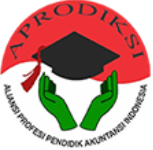Project Based Learning on Creative Economy Competence at Vocational Schools in Bali
(1) University of Muhammadiyah Prof. DR. HAMKA
Abstract
This study aims to analyze the implementation and implementation of industrial working practices (Prakerin) based on project-based blended learning in the field of creative economy expertise at Vocational Schools in Bali Province during the new normal. Industrial work practices (Prakerin) improve students' competence in work experience in the working world industry (IDUKA). The research model uses a qualitative method with a case study. This method is intended to know in depth the implementation of industry work practices (prakterin) based on project based learning online or offline in SMK Bali Province. The research began through direct observation (observation) of the activities of the implementation of industry work practices based on blended learning projects in SmK Bali Province. Data collection techniques are carried out through in-depth interviews with informants who are directly involved in industry work practice activities (prakerin) based on blended learning projects. The research location was conducted at SMKN 1 Sukowati, Bali, SMKN 2 Negara Bali, SMKN 3 Denpasar and SMKN 5 Denpasar Bali Province. The results of this study indicate that: 1) The conditions for implementing project based learning Prakerin are constrained by the limitations of face-to-face learning activities in education units; (2) Project-based, blended learning-based Industrial Work Practice is one solution as a form of student industrial work practice program using online learning as well as face-to-face teaching and collaboration to design, repeat, and complete project-based learning tasks or creative economy products; (3) The industrial work practice curriculum is the result of synchronizing the curriculum in the education unit with the industrial working world curriculum (IDUKA).
Keywords
Full Text:
PDFReferences
Akkoyunlu, B., & Soylu, M. (2006). A Study on Students’ Views On Blended Learning Environment. Turkish Online Journal of Distance Education-TOJDE, 7(3). https://doi.org/10.17718/TOJDE.25211
Akkoyunlu, B., & Soylu, M. (2008). A Study of Student’s Perceptions in a Blended Learning Environment Based on Different Learning Styles. Educational Technology & Society (EDUC TECHNOL SOC), 11(1), 183–193.
Albion, P. R. (2008). Web 2.0 In Teacher Education: Two Imperatives For Action. Computers in the Schools. Interdisciplinary Journal of Practice, Theory, and Applied Research, 25(3–4). https://doi.org/doi.org/10.1080/07380560802368173
Ardiani, L., & Ridwan. (2020). Evaluasi Pelaksanaan Program Prektek Kerja Industri (Prakerin). Jurnal Ilmiah Pendidikan Dan Pembelajaran, 4(2), 194–200. https://doi.org/dx.doi.org/10.23887/jipp.v4i2.25300
Atan, H., Sulaiman, F., & Idrus, R. (2005). The Effectiveness of Problem-Based Learning in the Web Based Environment for the Delivery of an Undergraduate Physics Course. International Education Journal, 6(4), 430–437. https://doi.org/doi.org/10.51212/jdp.v13i1.1393
B, C., Owens, T., & Barret-Baxendale, M. (2008). Blended Problem-Based Learning for Widening Participation: a Case Study. Research Associate in Learning & Teaching, 7(1). https://doi.org/10.11120/ital.2008.07010044
Beebe, R., Vonderwell, S., & Boboc, M. (2010). Emerging Pattern in Transfering Assesment Practices from F2F to Online Environment. Electronic Journal of E-Learning, 8(1).
Bersin, J. (2004). The Blended Learning Book: Best Bractices, Proven Methodologies, and Lessons Learned. San Francisco: Pfeiffer.
Bridges, S. M., Botelho, M. G., & Tsang, P. C. S. (2010). Blended Learning For an Interactive, Problem-Based Pedagogy. Medical Education, 44. https://doi.org/10.1111/j.1365- 2923.2010.03830
Bukit. (2014). Strategi dan Inovasi Pendidikan Kejuruan. Bandung: Alfabeta.
Carman, J. M. (2009). Blended Learning Design: Five Key Ingredients, Director, Product Development Knowledge Net. Retrieved from ubicc website: http://www.ubicc.org/files/pdf/1_3 55.pdf
Caron, Visentin, & Ermondi. (2011). Blended-learning for Courses in Pharmaceutical Analysis. Journal of E-Learning and Knowledge Society, 7(2), 93–102. https://doi.org/10.20368/1971-8829/805
Cox, G., Carr, T., & Hall, M. (2004). Evaluating the Use of Synchronous Communication in Two Blended Courses. Journal of Computer Assisted Learning, 20, 183–193. https://doi.org/10.1111/j.1365-2729.2004.00084.x
Directorate of Vocational High School Development. (2010). Vocational Development Roadmap for 2010-2014. Jakarta: Ministry of National Education.
Donnelly, R. (2006). Blended Problem Based Learning for Teacher Education: Lessons Learnt. Journal of Learning, Media and Technology, 31(2), 93–116.
Donnelly, R. (2008). Activity Systems within Blended Problem-Based Learning in Academic Professional Development. International Journal of Applied Educational Studies, 3(1), 38–59.
Donnelly, R. (2010). Harmonizing Technology with Interaction in Blended Problem-Based Learning. Computers and Education, 54(2).
Dziuban, D. . (2004). Blended learning. Educause Center For Applied Research, (7).
Hikmat, H. E., Aldim, & Irwandi. (2020). Efektivitas Pembalajaran Daring Selama Masa Pandemi Covid-19 : Sebuah Survey Online. In Digital Library. Bandung: UIN Sunan Gunung Djati.
J.Bonk, C., & Graham, C. R. (2005). The Handbook of Blended learning. USA: Pfeiffer.
Kejuruan, D. P. S. M. (2008). pengelolaan praktek kerja industri.
Mavrikios, D., Papakostas, N., Mourtzis, D., & Chryssolouris, G. (2013). On industrial learning and training for the factories of the future: A conceptual, cognitive and technology framework. Journal of Intelligent Manufacturing, 24(3), 473–485.
Nurita, A., & Astuti, F. (2020). Pengembangan Model Praktek Kerja Industri ( Prakerin ) berbasis Integrited Blended Learning Unit Produksi ( IBL UP ) SMK Pascapandemi Covid -19.
Prinz, C., Morlock, F., Freith, S., Kreggenfeld, N., Kreimeier, D., & Kuhlenkötter, B. (2016). Learning Factory Modules for Smart Factories in Industrie 4.0. Procedia CIRP, 54, 113–118. https://doi.org/10.1016/j.procir.2016.05.105
Radhila, A. (2013). Implementasi Warehouse Management Menggunakan Metode PDCA Studi Kasus Di CV. Innotech Solution - Malang. Jurnal Valtech, 1(1), 230–241.
Sugiyono. (2015). Quantitative, Qualitative, and R&D Research Methods. Bandung: Alfabeta.
Wahjusaputri, S., & Bunyamin. (2021). Challenge of Teaching Factory Based on School’s Potentials in West Java during Covid-19 Pandemic. Turkish Journal of Computer and Mathematics Education, 12(7), 2209–2217.
Wahjusaputri, S., Bunyamin, Fitriani, S., Nastiti, T. I., & Syukron, A. (2020). Teaching Factory Model for Increasing the Competency of Vocational Secondary Education Students in Indonesian Territory. International Journal of Innovation, Creativity and Change, 11(1).
Zitting, E., & Krause, A. O. I. (2005). Blended Learning In Chemical Processes Education.
Zyainuri, Z., & Marpanaji, E. (2013). Penerapan e-learning moodle untuk pembelajran siswa yang melaksanakan prakerin. Jurnal Pendidikan Vokasi, 2(3), 410–426. https://doi.org/10.21831/jpv.v2i3.1046
Refbacks
- There are currently no refbacks.

This work is licensed under a Creative Commons Attribution 4.0 International License.


.png)

.png)





